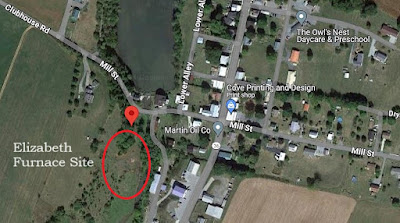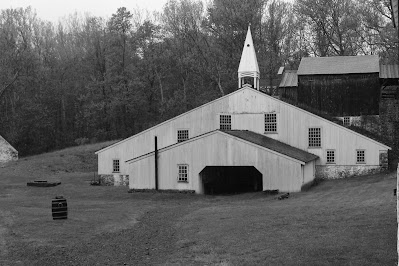The skies above are filled with constant motion. Besides the clouds and the sun crossing slowly across the sky during our days, we also have the motion of the moon. Further out, the planets move around in our night and morning skies and change their positions to each other. Even further out, though much less noticeable, the stars slowly change their nightly position (due to the earth’s orbit) and their positions as compared to each other, visible only through telescopes and by comparing their positions to older pictures.
In our own solar system, with even a small telescope we can see the moons of planets moving over the course of a night. We can also see the motion of our own moon by watching it pass in front of the stars behind it. Using telescopes and even binoculars we can watch as stars are covered by the moon. This is called an occultation, when one object moves in front of another, blocking it from view. I find it fascinating to watch this happen!
The solar eclipse we saw in April was actually an occultation; the moon slowly covered the sun from our view!
A friend in my astronomy club recently sent out an e-mail, reminding us that there was going to be an occultation of the bright star Spica on Saturday night. (7/13/24)
Since the club had two star parties scheduled for that weekend, I felt as if the event couldn’t help but be clouded out, that is how so many of our star parties usually end up. It is a Pittsburgh thing and also an astronomy thing.
The jokes about rain and clouds and the recent purchases of telescopes and astronomical events are both old and completely uncountable. I can’t recall how many times I’ve heard people apologizing for buying new equipment and for the resulting clouds they brought with it. I didn’t want to get my hopes up…
( For another blog about astronomy, occultations and clouds, click below)
Notes from a Reading Addict: Waiting for the Clouds to Part (bookman56.blogspot.com)
I started making my list. I don’t want to forget anything important, the last thing I want to do is set everything up and find out I’ve forgotten one of the most important things required! This is what was on the list; my camera (charged!) and its assorted gear, the telescope, its tripod, counterweights, binoculars, a notebook and pen, flashlights (red and white), an accurate timepiece and of course, the obligatory cup of coffee. I knew where I was going to go, I had called the owners and left a message with their answering service saying when and where I’d be.
I set up the telescope in the front yard as a test run. I pre-set the camera and checked my field of view. The entire diameter of the moon would be able to be captured. It took about 10 minutes to set everything up. I had put a 1.25” adapter on the camera and mounted it where the diagonal goes.
The time for the occultation was approximately 11:20PM, so I made sure the car was packed by 9. Then I sat inside and did some reading, caught up on a few e-mails and also kept an eye on the sky. Around 10:15, I left the house and hit the road.
My observing spot was in a cemetery situated above the town of Sharpsburg. The area itself is dark and hardly ever visited and it is high enough that I would have no problems with seeing Spica and the moon through trees, buildings or power lines. The roads around it were empty, there were no cars going by. I pulled in and started setting up. I was early and as far as occultation watching goes, that is always good thing. The telescope has time to acclimate and there is time to do some test shots and make sure that the focus is proper and locked. The camera is using the telescope as its lens so it has no automatic focus like the camera lens have. It all depended on my aged eyes to get as crisp a shot as possible.
After taking 5 or 6 shots and making slight adjustments after each one, I tightened the focuser and then stood and watched through binoculars as the bright star neared the moons darkened side. Looking through binoculars I could see Spica but I couldn’t see the nearing edge of the moon; it blended in with the dark sky behind it. I couldn’t see the edge using the preview screen on the camera either. I could only guess how close the star was. I was watching the time carefully but the occultation might happen earlier than predicted.
Spica is the 15th brightest star in our night sky. It is located in the constellation Virgo and it lies about 260 light years away from us. Even though it is bright, I still needed binoculars to see it near the blindingly bright moon.
The timer on the shutter was set for 10 seconds to help eliminate vibrations. I also had placed a small bean bag on the camera to help steady it. As the time neared, I decreased the time between shots. I looked at one shot and the star was clearly visible and then the next shot showed that the star had disappeared!
To see Spica, you may
have to enlarge the picture.
The last shot with Spica visible was taken at 11:20:53PM, the next shot, after it had disappeared was taken at 11:21:11PM, 18 seconds later. The camera's time stamp was accurate to within a second.
One thing I think I’ll change for the next occultation is that I’ll watch it through the telescope instead of trying to photograph it. I find that it is much more interesting watching the star disappear in real time. Seeing the star, planet or moon disappear is always exciting to me.
Everything worked out as planned. I saw one of the wonders that our world presents us. I saw something happen in the sky that very few of the world’s population even knew was happening.
There are so many treasures hidden right in front of our eyes and all we have to do is look for them! They aren’t all astronomical; waterfalls, flowers, the hills and valleys of our planet, sunrises, sunsets and rainbows. There are also the sounds and smells of our world. Wind rushing across the fields, through wind chimes and the soothing sounds of water rushing over the rocks. The smells of flowers, freshly baked bread and the rain having just fallen on a hot summer day. We are so lucky to have these opportunities presented to us. They are out there and they have the power to move us, both emotionally and intellectually. Take advantage of them, they are there for us to experience!
I was back at home a little after midnight, happy and ready to jump into bed. I had spent a quiet hour under a beautiful night sky. I had watched movement in space; I had watched a star disappear. What a wonderful way to spend an evening!

.jpg)































%20at%20night.jpg)


1873%20.jpg)












